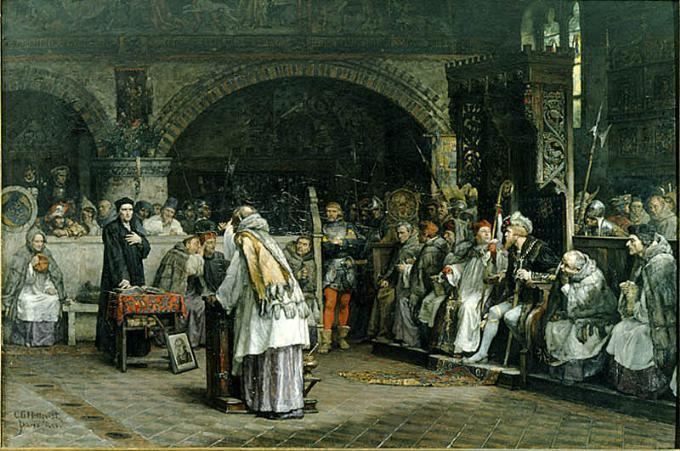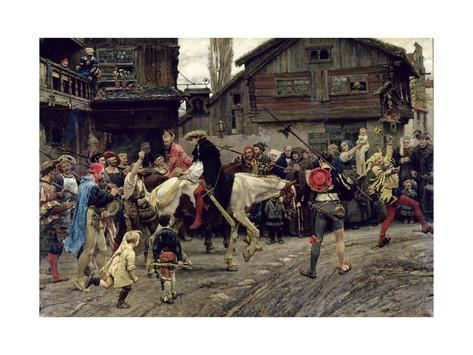Nationality Swedish Name Carl Hellqvist | ||
 | ||
Artwork Valdemar Atterdag holding Visby to ransom, 1361 | ||
Carl Gustaf Hellqvist (15 December 1851 – 19 November 1890) was one of Sweden's most popular historical painters in the 19th century. He was born in 1851 in Kungsör, between Arboga and Eskilstuna at Lake Mälaren, Sweden, where he grew up and went to school.

In 1864 Hellqvist started to study art at the Royal Academy of Fine Arts in Stockholm, and in 1875 he was awarded the Royal Academy's highest prize for his painting "Gustaf I anklagar Peder Sunnanväder och Mäster Knut inför domkapitlet i Västerås".

Two years later in 1877 Hellqvist was awarded a travelling scholarship from the Academy, and he travelled around the European continent. He moved together with his fiancée, Julie, to Munich in 1879.

In 1882 he and Julie got married, and they left for Paris, where Hellqvist earlier had been present at the Paris Salon with his oil painting "The Death of Sten Sture the Younger on the Ice of Lake Mälaren, 1520" (Swedish, "Sten Sture d y:s död på Mälarens is 1520").

In August 1882 he was awarded the gold medal for his magnificent historical painting "Valdemar Atterdag Holding Visby to Ransom, 1361" (Swedish, "Valdemar Atterdag brandskattar Visby 1361") in Vienna, Austria.

Hellqvist suffered from painful head aches which forced him to take a leave from his teaching at Königliche akademische Hochschule für die bildende Künste in 1886. He ended his period of historical painting at the same time.
In 1889 Hellqvist's disease was treated with electroconvulsive treatment, and he was ordered on a diet.
In 1890 it was announced that Hellqvist's studio-objects were to be sold. Probably the most famous photograph of his studio was taken at the same time, which shows how a historical painter's studio looked like during the late 19th century.
From March 1889 he stayed in a mental hospital in Munich, and he died there on 19 November 1890 at the age of 38. He was buried in Munich.
